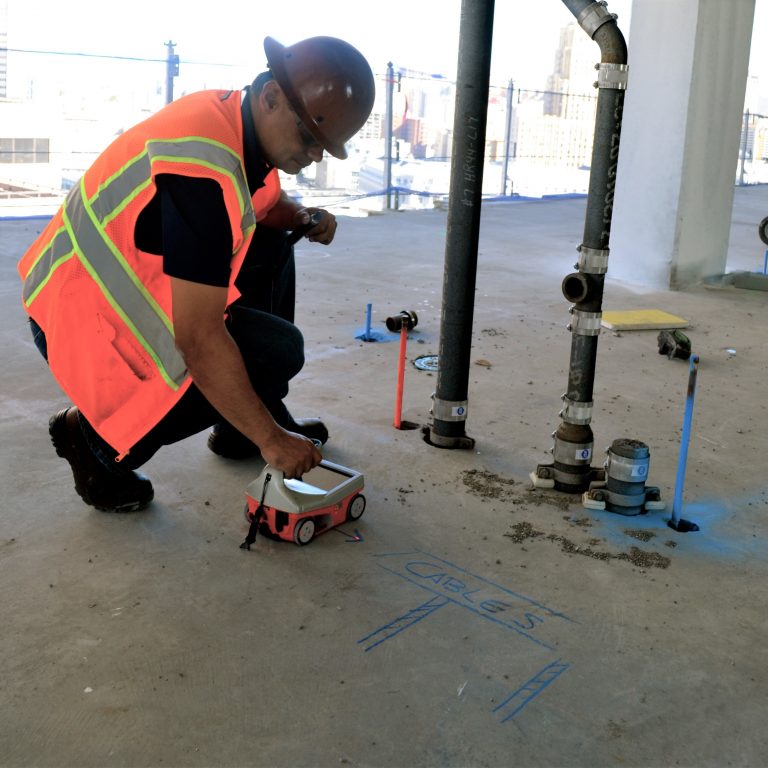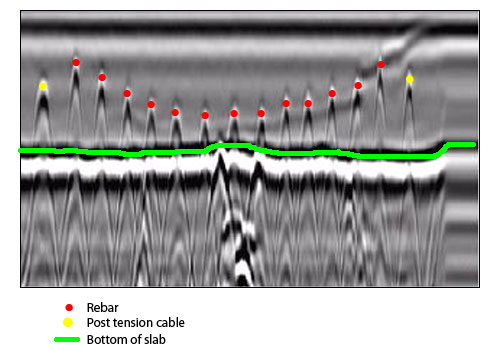Concrete Scanning: A Crucial Action In The Direction Of Making Sure Structural Integrity and Safety And Security
In the realm of building and construction and facilities upkeep, the value of concrete scanning can not be overemphasized. By employing advanced technology and methods, concrete scanning serves as a crucial tool in making sure that the integrity and safety of buildings and bridges are maintained to the greatest criteria.
Relevance of Concrete Scanning
Concrete scanning plays a vital function in guaranteeing the architectural honesty and security of buildings and facilities tasks. By utilizing advanced modern technologies such as ground-penetrating radar (GPR) and electromagnetic induction, specialists can non-destructively evaluate concrete structures to detect prospective issues, spaces, ingrained items, and reinforcement format. This procedure enables early discovery of abnormalities that could jeopardize the security of a structure, avoiding expensive problems and guaranteeing the security of residents.
Concrete scanning is specifically important throughout the preparation and building and construction stages of a job. Prior to drilling, reducing, or coring into concrete, scanning aids recognize the exact places of rebar, post-tension cable televisions, and other embedded elements, decreasing the threat of unintentional hits that can result in architectural weaknesses. Furthermore, concrete scanning aids in top quality control by validating the density of concrete covers and detecting any kind of disparities that may affect the overall sturdiness of the structure. Eventually, buying concrete scanning services is not only a proactive step to alleviate dangers but also a fundamental action in the direction of maintaining the long-term security and security of structures and facilities.
Technology for Concrete Evaluation

Benefits of Very Early Discovery
Prompt detection of structural concerns can dramatically alleviate threats and make certain the durability of building and construction jobs. By determining potential problems beforehand in the building procedure, stakeholders can take aggressive procedures to attend to problems before they intensify right into larger and extra expensive issues. Among the essential advantages of early detection is the prevention of structural failures, which can pose major safety risks and lead to task delays and economic losses.
Additionally, very early discovery enables timely repair work and maintenance, which can assist extend the life expectancy of the framework. By attending to problems quickly, building groups can stay clear of costly repair work and even the need for early replacement of architectural elements. This positive approach not just conserves money and time however also improves the overall security and sturdiness of the building task.
In addition, very early detection can enhance job planning and decision-making by providing stakeholders with useful insights right into the condition of the framework. Armed with this information, task managers can make informed choices pertaining to building and construction products, timelines, and approaches, leading to a lot more efficient and successful job end results.
Guaranteeing Architectural Stability
Making sure the architectural security of a building and construction task is vital to its security and long life. Concrete scanning plays a crucial function in making certain structural stability by spotting potential problems such as gaps, delamination, or support deterioration that might jeopardize the honesty of the framework over time.
By using advanced scanning technologies like ground-penetrating radar (GPR) and electromagnetic induction, building specialists can non-invasively check concrete frameworks to identify locations of concern under the surface. This proactive method permits for the early detection of issues or weaknesses, allowing timely repairs or support to avoid structural failures.
Normal concrete scanning during various building and construction phases and throughout the life cycle of a framework can assist maintain its security, alleviate dangers, and ensure the safety of owners. By focusing on architectural security with concrete scanning, building and construction projects can enhance their resilience and sturdiness, eventually adding to better security and longevity.
Protecting Against Essential Failures
To guard versus disastrous occasions, thorough monitoring and proactive maintenance are necessary in avoiding critical failings within architectural structures. Finding possible concerns before they escalate is vital to stop structural failings. Implementing routine examinations, such as concrete scanning, can reveal surprise problems like gaps, fractures, or rust that could endanger the honesty of a framework. By making use of sophisticated scanning technologies like Ground Penetrating Radar (GPR) or Concrete X-ray, engineers can non-destructively analyze the problem of concrete and identify weak factors that require support or fixing - RainierGPR Service Areas.

Conclusion
In final thought, concrete scanning plays an essential role in making sure architectural integrity and security by using sophisticated technology visit the site for early detection of potential issues. This aggressive strategy assists protect against vital failings and guarantees the stability of structures. It is necessary to prioritize concrete assessment as a standard technique to protect the longevity and safety of buildings and framework.
Concrete scanning plays a crucial duty in making certain the structural integrity and security of buildings and infrastructure tasks. In addition, concrete scanning help in quality control by validating the thickness of concrete covers and spotting any disparities that might influence the overall longevity of the structure. Concrete scanning plays an essential duty in guaranteeing architectural stability by detecting possible problems such as voids, delamination, or reinforcement deterioration that could compromise the stability of the framework over time.

In verdict, concrete scanning plays my latest blog post a crucial duty in guaranteeing structural stability and safety by using advanced modern technology for very early detection of possible issues.